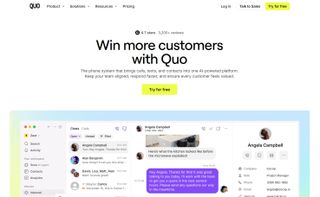Phone & Communications
Latest about Phone & Communications

Ulefone RugKing rugged phone review
By Mark Pickavance published
The Ulefone RugKing is a lightweight, rugged design ideal for those who need a tough device occasionally.

Modernize your business communication for less with Quo’s all-in-one phone system
By Sead Fadilpašić published
Try the platform’s bells and whistles risk-free and get an exclusive 20% discount on your first three months.

RugOne Xever 7 Pro rugged phone review
By Mark Pickavance published
The RugOne Xever 7 Pro is a lightweight, rugged design that uses swapable batteries to extend its operating life.

Doogee S200 Ultra rugged phone review
By Mark Pickavance published
The Doogee S200 Ultra is yet another evolution of its S200 line of rugged smartphones

Doogee V Max LR rugged phone review
By Mark Pickavance published
The Doogee V Max LR is a monster rugged phone built for those in the construction industry.

Doogee V Max Play rugged phone review
By Mark Pickavance published
This rugged phone is half a house brick of Android power.

AGM G3 Pro rugged phone review
By Mark Pickavance published
The AGM G3 Pro is a rugged phone built for those who need thermal imaging on a regular basis.

Best VoIP provider of 2025
By Daniel Blechynden last updated
We list the best VoIP providers, to make it simple and easy for businesses to save on costs by managing your phone system through the internet.
Sign up to the TechRadar Pro newsletter to get all the top news, opinion, features and guidance your business needs to succeed!

